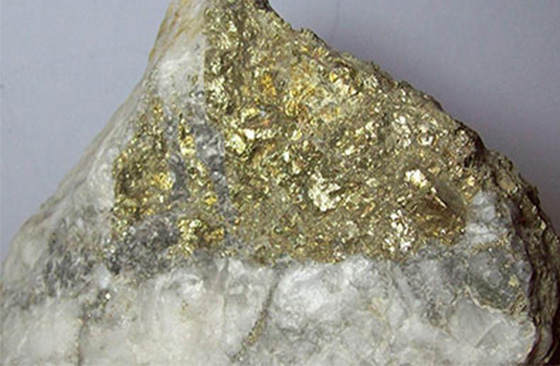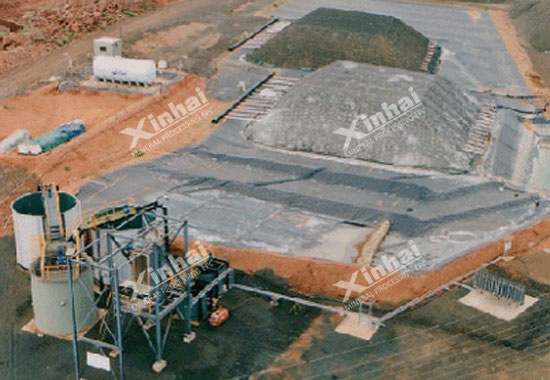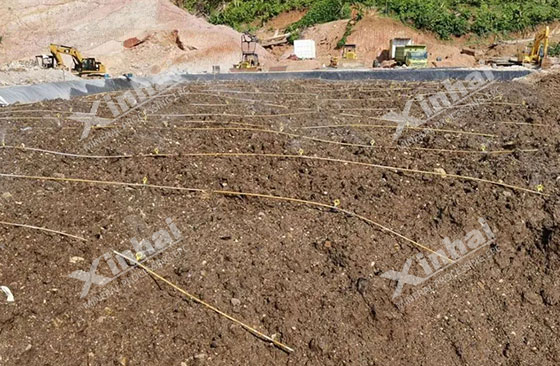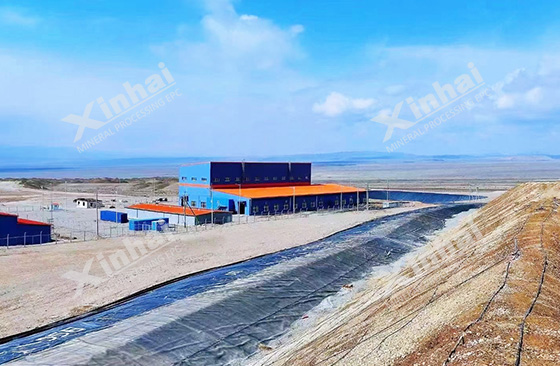
Gold ore heap leaching technology is widely used due to its advantages of low investment, low operating cost and simple process. In the heap leaching process, the properties of the gold ore have an important influence on the leaching efficiency of gold. The following will discuss the influence of the properties of the gold ore on the gold ore heap leaching process from three aspects: the physical and chemical properties of the gold ore, the occurrence state of gold, and other mineral components in the ore, and propose optimization measures.

The structure and physical and chemical properties of gold ore will directly affect the contact degree between the leaching agent and the gold in the ore and the reaction efficiency of heap leaching. When the ore structure of gold ore is loose, the porosity is high and the surface pores are abundant, the diffusion rate of leaching agent and oxygen is accelerated. When the primary ore has a dense structure and low porosity, it will make it difficult for the leaching liquid to diffuse into the ore, reducing the leaching rate of gold. Therefore, fine grinding or other pretreatment methods can be used to increase the exposure area of ore to improve the leaching efficiency of gold ore.

The occurrence state of gold in the ore can determine the leaching efficiency of gold. The larger the surface area of the leaching liquid and the gold particles, the faster the leaching rate of gold. If the gold particles in the ore exist in the cracks or holes of the ore, the surface of the gold is fully exposed and easy to be leached. When the gold particles are wrapped by other minerals, it is difficult for the leaching liquid to contact the gold particles, making it difficult for the gold to be dissolved, thereby reducing the leaching efficiency of gold. The shape and particle size of gold will also affect the heap leaching speed of gold ore. The finer the gold particles, the larger their surface area, and the leaching liquid can contact them more effectively, speeding up the leaching speed. In gold mines, the shapes of gold particles are diverse, including round, flaky, vein-like, dendritic and other irregular shapes. Among them, the surface area of round gold particles is small, and the leaching speed is relatively slow, while the flaky or irregular gold particles have a faster leaching speed due to their large contact area and complex surface morphology.

There are many associated minerals in gold ore, which will have different degrees of influence on the cyanide leaching of gold ore. According to the nature of their influence, these minerals can be divided into harmful minerals and beneficial minerals.
1. Influence of harmful minerals: Metal sulfides and certain oxides may react with cyanide, consume a large amount of reagents, and increase production costs. In addition, these harmful minerals will also dissolve in the leaching solution, and may produce by-products that inhibit gold dissolution. In addition, some carbonaceous materials will also adsorb cyanide or dissolved gold, reducing the recovery rate of gold. In order to reduce these adverse effects, the ore can be pretreated before spray cyanide leaching.
2. The role of beneficial minerals: The appropriate amount of associated components in the ore may promote the leaching of gold in some cases. When the ore contains an appropriate amount of lead, it can accelerate the dissolution reaction of gold. When a small amount of mercury salts are present in the leaching solution, the surface of the gold particles is altered, thereby increasing the dissolution rate of gold. These beneficial effects are only effective within an appropriate range, and the concentration of associated components needs to be strictly controlled. Excessive lead or mercury can lead to environmental pollution and increased process costs.

In summary, the efficiency of the gold ore heap leaching process is affected by many aspects of the properties of the ore. The following measures can be taken to optimize the heap leaching process of gold mines:
1. Ore pretreatment: When the gold ore structure is dense and the gold particles are wrapped, roasting, fine grinding or oxidation pretreatment is used to increase the exposure area and surface activity of the gold particles.
2. Ore classification and treatment: Classify the ore pile according to the differences in ore properties, separate the oxidized ore suitable for heap leaching and the difficult-to-treat primary ore, and formulate appropriate separation processes and optimize process parameters respectively.
3. Reagent optimization: In the heap leaching process of gold mines, the reagent formula and concentration should be adjusted according to the content and type of associated components in the ore.
4. Environmental and cost control: In the heap leaching of gold mines, the pH value and cyanide concentration of the leaching solution need to be strictly controlled to avoid reagent consumption and environmental pollution. In addition, the treatment and recovery of leaching waste liquid are also important measures to reduce costs and protect the environment.
The above content is a simple summary of the effects of the physical and chemical properties of gold ore, the state of gold occurrence, and the components of associated ore on the efficiency of gold heap leaching process. Taking targeted measures can effectively increase the efficiency of gold leaching, reduce production costs, and achieve efficient utilization of gold resources. With the continuous development of mineral processing technology, more environmentally friendly and efficient heap leaching processes will be developed to promote the development of gold ore heap leaching technology.
To find out more about our products and solutions, please fill out the form below and one of our experts will get back to you shortly.